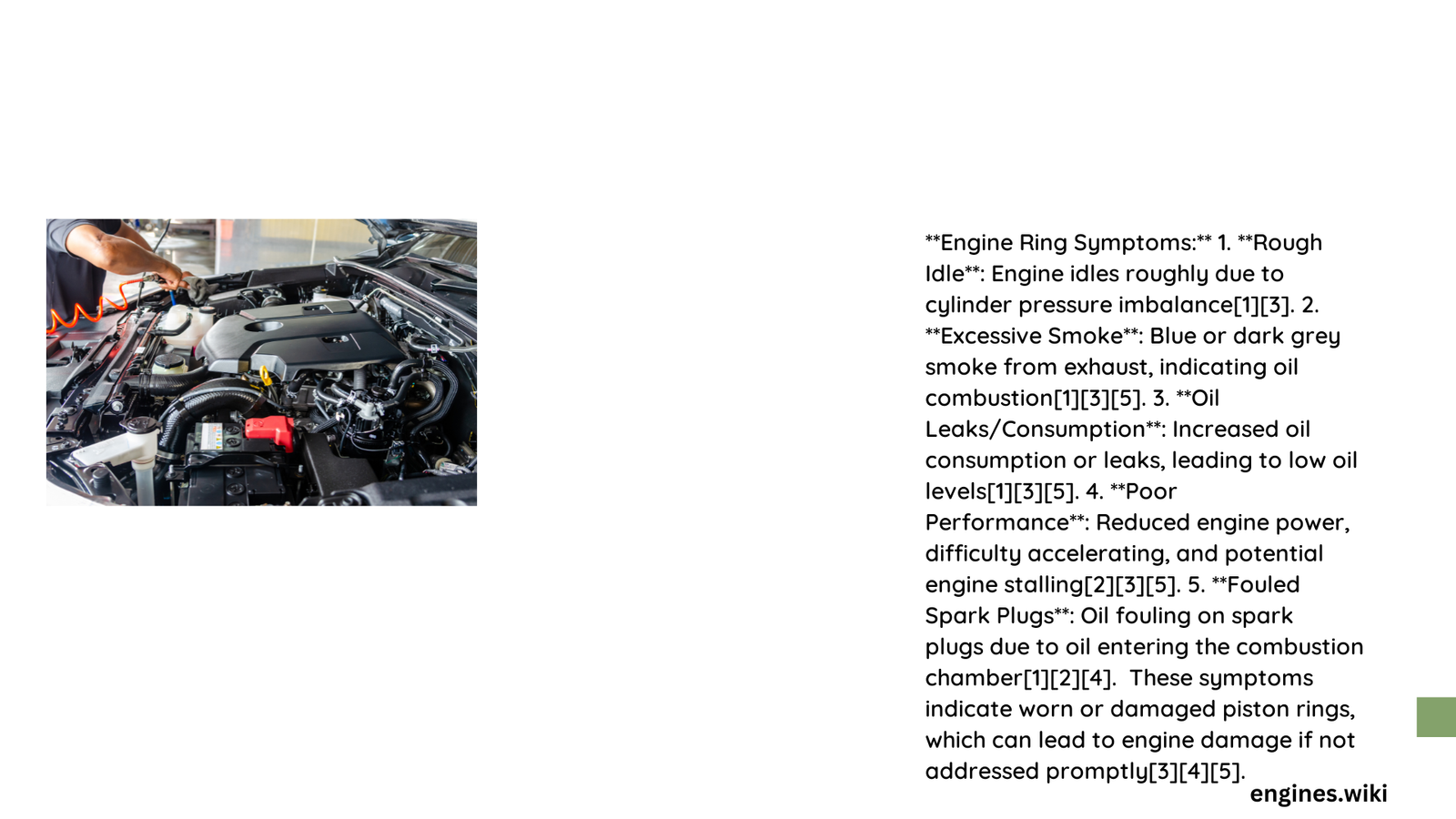Engine Rings Symptoms: A Comprehensive Diagnostic Guide
Quick Overview of Engine Ring Problems
Piston ring wear can silently compromise your vehicle’s performance, leading to significant mechanical issues if left unaddressed. Recognizing early symptoms like increased oil consumption, blue exhaust smoke, and reduced engine power is crucial for preventing catastrophic engine damage and maintaining optimal vehicle performance.
What Causes Piston Ring Deterioration?
Piston rings naturally wear down due to several factors:
- High-Mileage Engines: Continuous friction and heat
- Poor Lubrication: Insufficient or degraded engine oil
- Extreme Operating Conditions: Frequent high-temperature or high-stress driving
- Manufacturing Defects: Rare but possible quality issues
How Can You Detect Worn Engine Rings?
Oil Consumption Warning Signs
| Symptom | Normal Range | Warning Range |
|---|---|---|
| Oil Usage | 1 qt per 5,000 miles | 1 qt per 1,000 miles |
| Refill Frequency | Every 5,000 miles | Every 3,000 miles |
Visual and Performance Indicators
- Blue/Grey Exhaust Smoke
- Indicates oil leaking into combustion chambers
- Most noticeable during acceleration
-
Accompanied by burning oil smell
-
Performance Reduction
- Decreased acceleration
- Reduced engine responsiveness
- Lower fuel efficiency
Diagnostic Techniques for Engine Ring Issues
Compression Test Method
Dry vs. Wet Compression Test Procedure:
- Perform initial dry compression test
- Add small amount of oil to cylinder
- Retest compression
- Compare PSI readings
Interpretation:
– PSI increase of 10+ indicates potential ring failure
– Significant variance between cylinders suggests localized ring wear
Economic Impact of Delayed Repair
Ignoring engine ring symptoms can lead to:
- Increased repair costs
- Potential complete engine replacement
- Reduced vehicle resale value
- Higher fuel consumption
Professional Recommendations
- Regular oil changes
- Use high-quality engine oil
- Perform periodic compression tests
- Address symptoms immediately
- Consult professional mechanics for comprehensive diagnosis
Technical Specifications to Monitor
- Normal Compression Ratio: 8:1 to 10:1
- Acceptable Compression Variance: Within 10-15% between cylinders
- Recommended Inspection Interval: Every 30,000 miles
Prevention Strategies
- Maintain consistent oil change schedule
- Use manufacturer-recommended oil viscosity
- Avoid prolonged idle periods
- Monitor driving conditions and adjust maintenance accordingly
When to Seek Professional Help
Immediate Action Required If:
– Persistent blue smoke
– Oil consumption exceeds 1 qt per 1,000 miles
– Significant performance degradation
– Compression test reveals major inconsistencies
Conclusion
Understanding engine rings symptoms empowers vehicle owners to detect and address potential issues before they escalate into costly repairs. Regular maintenance, keen observation, and proactive diagnostics are key to preserving engine health.

